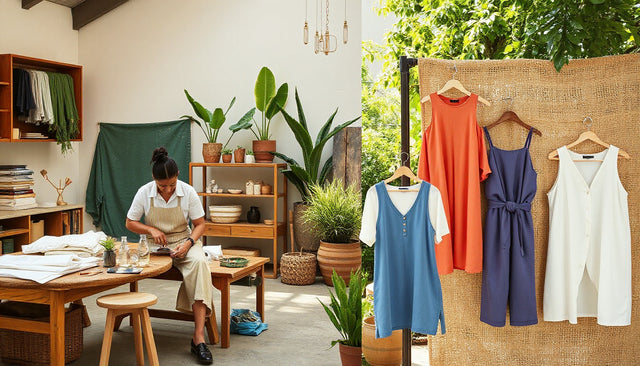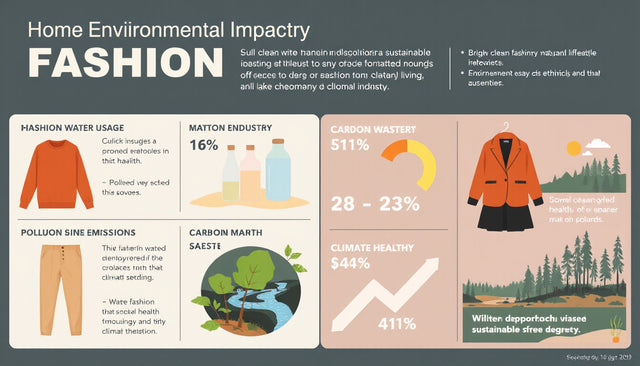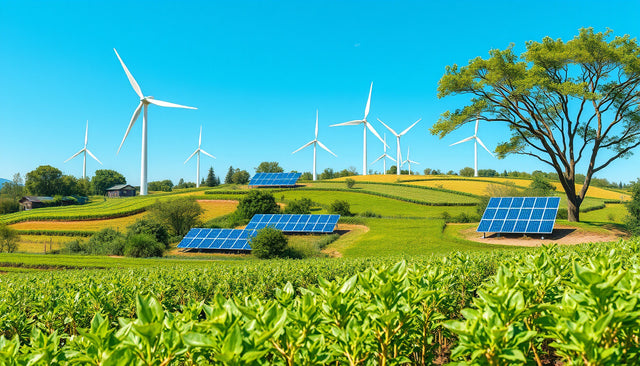Are you inspired to create a style that does good?
You seek a fashion that shows care for people, planet, and quality.
Ethical garment production goes beyond a buzzword.
It commits you to change how clothing is made and used.

What Is Ethical Garment Production?
At its heart, ethical garment production respects people and the Earth.
It cares for every hand that makes a garment and for the world that gives us life.
This approach has clear parts:
-
Fair labor practices:
Work in safe conditions.
Earn above minimum wages.
No child or forced labor.
No discrimination. -
Transparency:
See each step in the supply chain.
Hold every partner accountable. -
Environmental responsibility:
Cut waste, energy, and water use.
Choose sustainable or recycled materials.
Follow circular economy ideas such as durability, recyclability, and reuse. -
Community engagement:
Lift local economies.
Respect the culture of garment makers. -
Continuous improvement:
Watch for new challenges and ideas.
Hold yourself accountable and adjust as needed.
This high standard touches every part of production—from workers to buyers.
Why Ethical Garment Production Matters Today
Fast fashion has hurt our world.
It exploits people, wastes nature, and creates piles of trash.
Consumers now see the truth.
They demand eco-friendly and ethical brands.
This change brings benefits:
-
Environmental impact:
Sustainable methods save water.
They cut greenhouse gas emissions.
They curb chemical pollution. -
Social justice:
Ethical making gives workers dignity and fairness.
It often helps women and groups pushed aside. -
Brand reputation and loyalty:
Buyers choose brands that share their values.
Ethical production is smart business. -
Legal compliance & risk reduction:
Following rules avoids fines and harm to your brand.
Ethical garment production is good for the heart and for business.
How to Embrace Ethical and Sustainable Garment Production
1. Source Materials Consciously
Pick fabrics that match your goals.
Your choices matter:
-
Organic cotton:
Grow it without harmful pesticides.
It uses less water than usual cotton. -
Bamboo & hemp:
They grow fast and renew easily.
They make strong, breathable fabrics. -
Recycled polyester:
Reuse post-consumer plastics.
This cuts landfill waste and saves energy. -
Lyocell (Tencel):
Make it in a closed-loop process.
It breaks down easily and is kind to the Earth. -
Piñatex:
Use it as a cruelty-free leather alternative.
It comes from pineapple leaves.
Check that your suppliers earn fair trade and ethical marks.
2. Partner with Ethical Manufacturers
Finding the right maker can seem hard.
Look for these clear signs:
-
Transparent working conditions:
See the facility or ask for a third-party audit.
Look for clean, safe, and well-lit spaces. -
Fair labor practices:
Ensure the workers earn living wages.
They get health care and fair hours.
They report problems without fear. -
Environmental stewardship:
Look for energy-saving tools.
See plans for waste reduction. -
Certification beyond labels:
Avoid companies that merely pretend to be green.
Trust real certificates and common observations. -
Inclusive workplaces:
Favor women-led and LGBTQ+ friendly makers.
For tips, check communities like r/ethicalfashion on Reddit.
**3. Minimize Waste Throughout Production
Let your design cut waste out.
Here is how:
-
Zero waste pattern cutting:
Use the fabric fully.
Cut minimal scraps. -
Upcycling:
Turn leftovers into fresh designs. -
Inventory management:
Avoid overstock and extra production. -
3D printing and tech innovations:
Make pieces on demand with precision.
Cutting waste helps the Earth and saves money.
4. Educate & Engage Consumers
Build trust with clear facts.
Tell your customers where and how each garment is made.
Show the benefits for the planet.
Explain why ethical fashion matters.
Help them care for products to extend their life.
Quick Tips to Get Started with Ethical Garment Production
-
Ask tough questions:
Demand clear evidence of fair wages, safe workplaces, and green practices. -
Start small:
Order samples and build strong ties with makers.
Choose quality over volume. -
Certifications can guide, but inspect:
Use certificates as one tool.
Also check facilities or trusted third-party reviews. -
Focus on durability:
Pick fabrics that last so your goods sit in landfills less. -
Support supplier diversity:
Work with women-led and inclusive makers.
This balances power in the industry. -
Stay informed:
Watch industry news.
Follow fabric and waste-reduction tech.
In Closing: Your Role in Crafting Change
Ethical garment production may seem deep and hard, but it starts with a small commitment.
Look beyond simple labels and greenwashed ads.
Mix fair labor with clear supply chains and care for the Earth.
Educate buyers and act with fairness.
Whether you start a new line or improve old ways, each ethical choice sews hope—one stitch at a time.
Ready to bring your ethical fashion vision to life?
Start your search for makers of true integrity.
Explore sustainable fabrics for your art.
Join communities that lead change.
The future of fashion needs creators like you.
For more resources on fabric selection and manufacturing partnerships, check out:
- “An Introduction to Fabric Selection for Your Brand”
- r/ethicalfashion community on Reddit
Let’s make fashion that cares—with you leading the way.
At Design Delight Studio, we’re committed to sustainable living and ethical fashion. Every article reflects our passion for mindful choices that empower both people and the planet.






















0 条评论